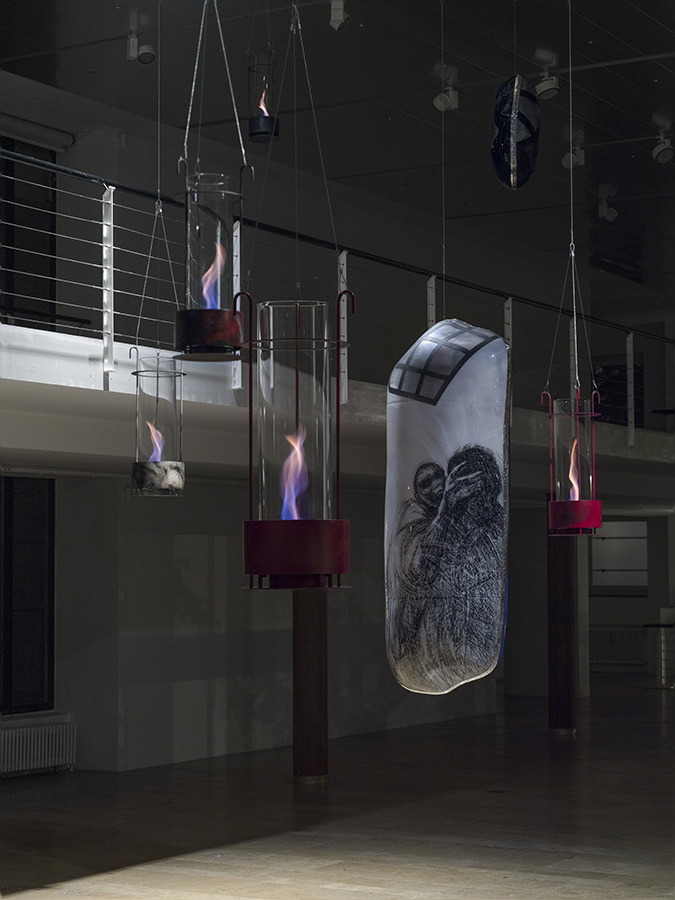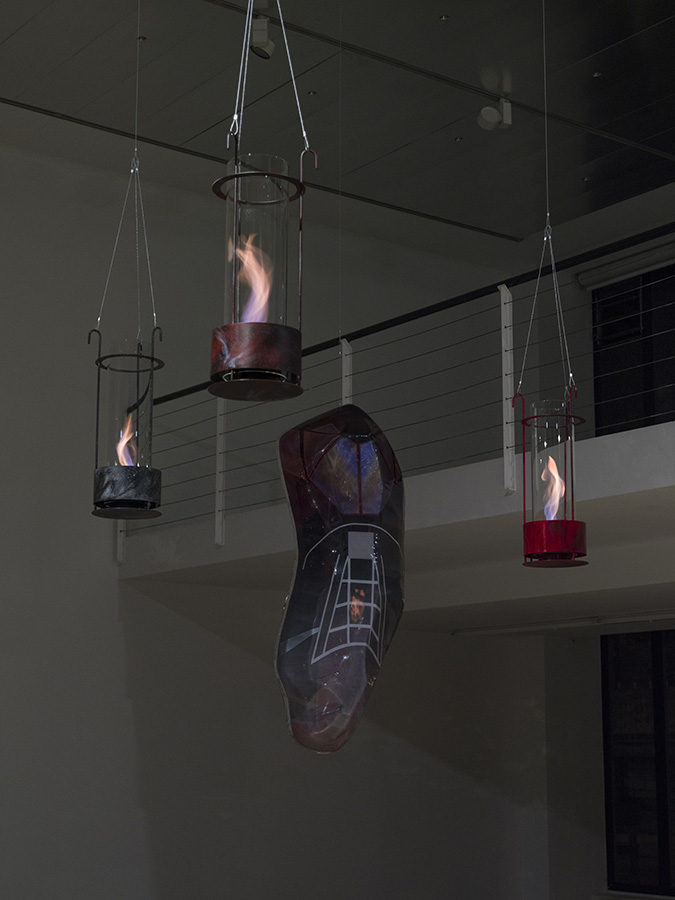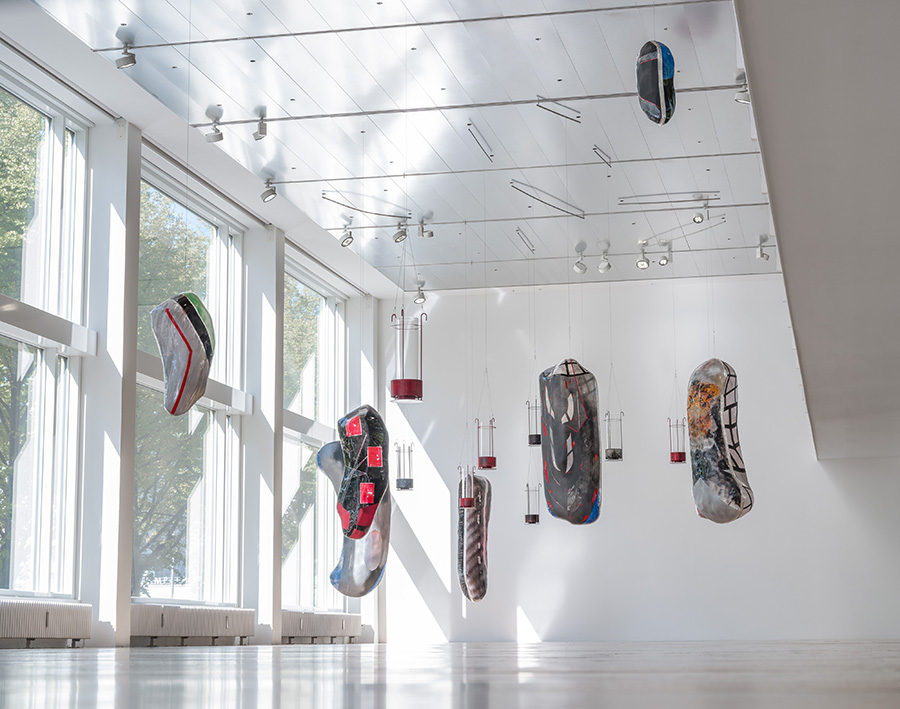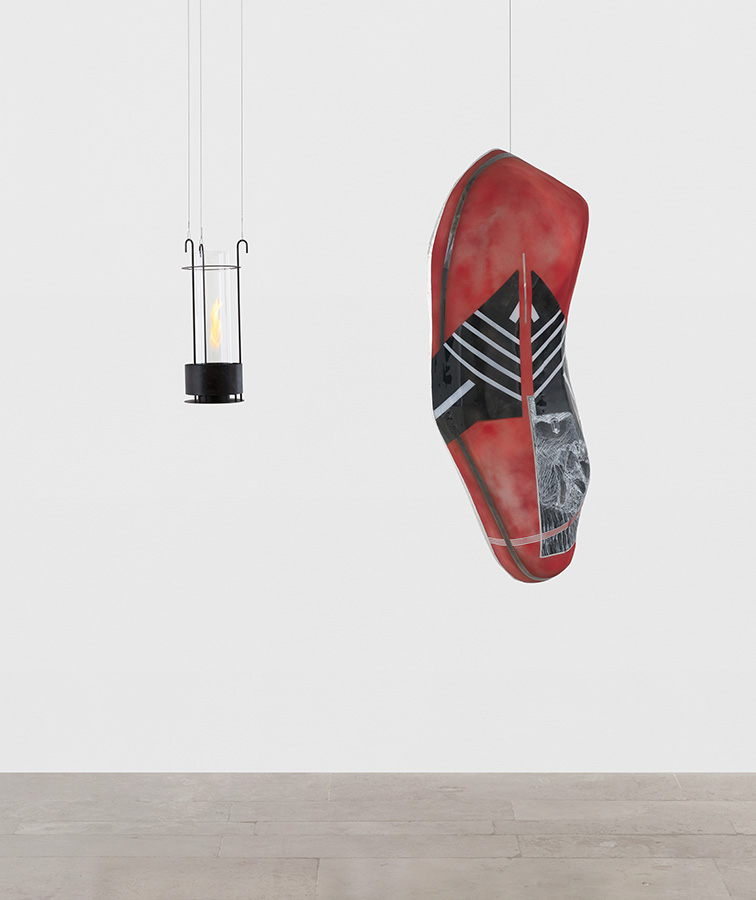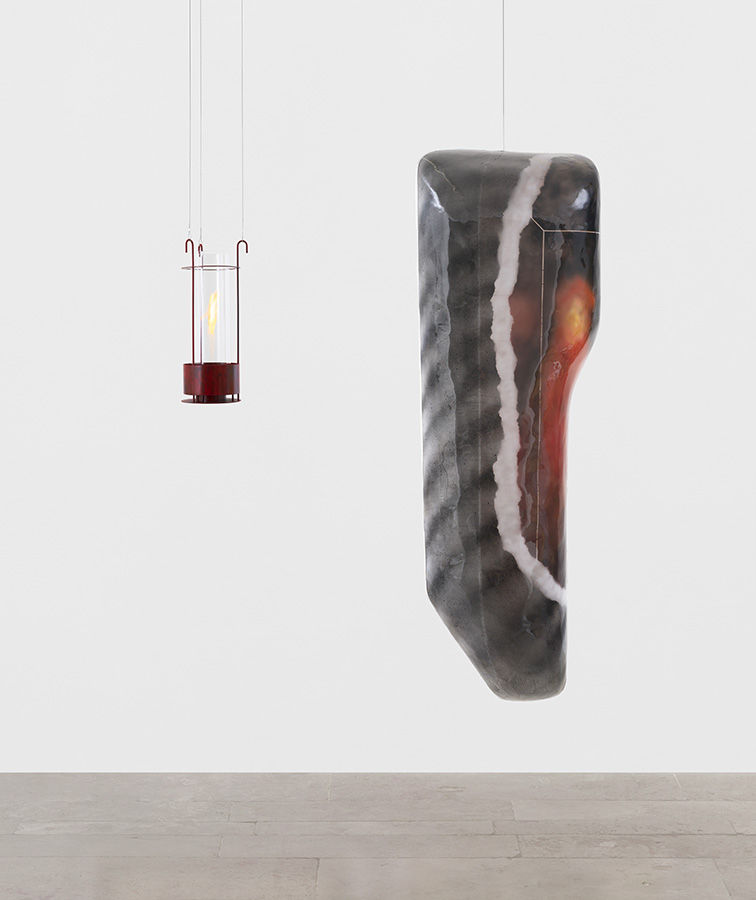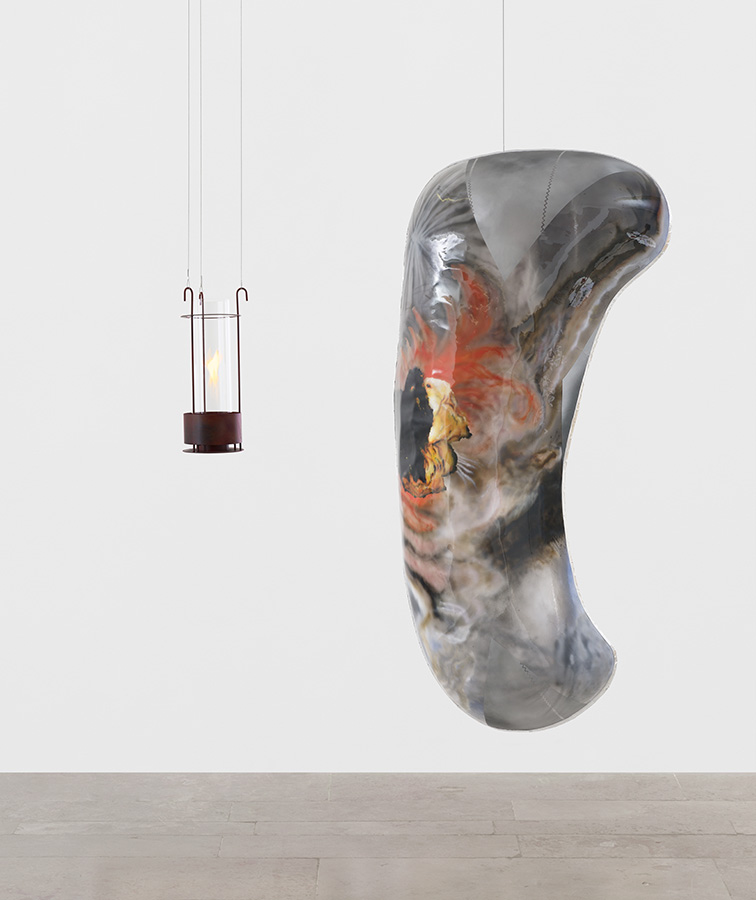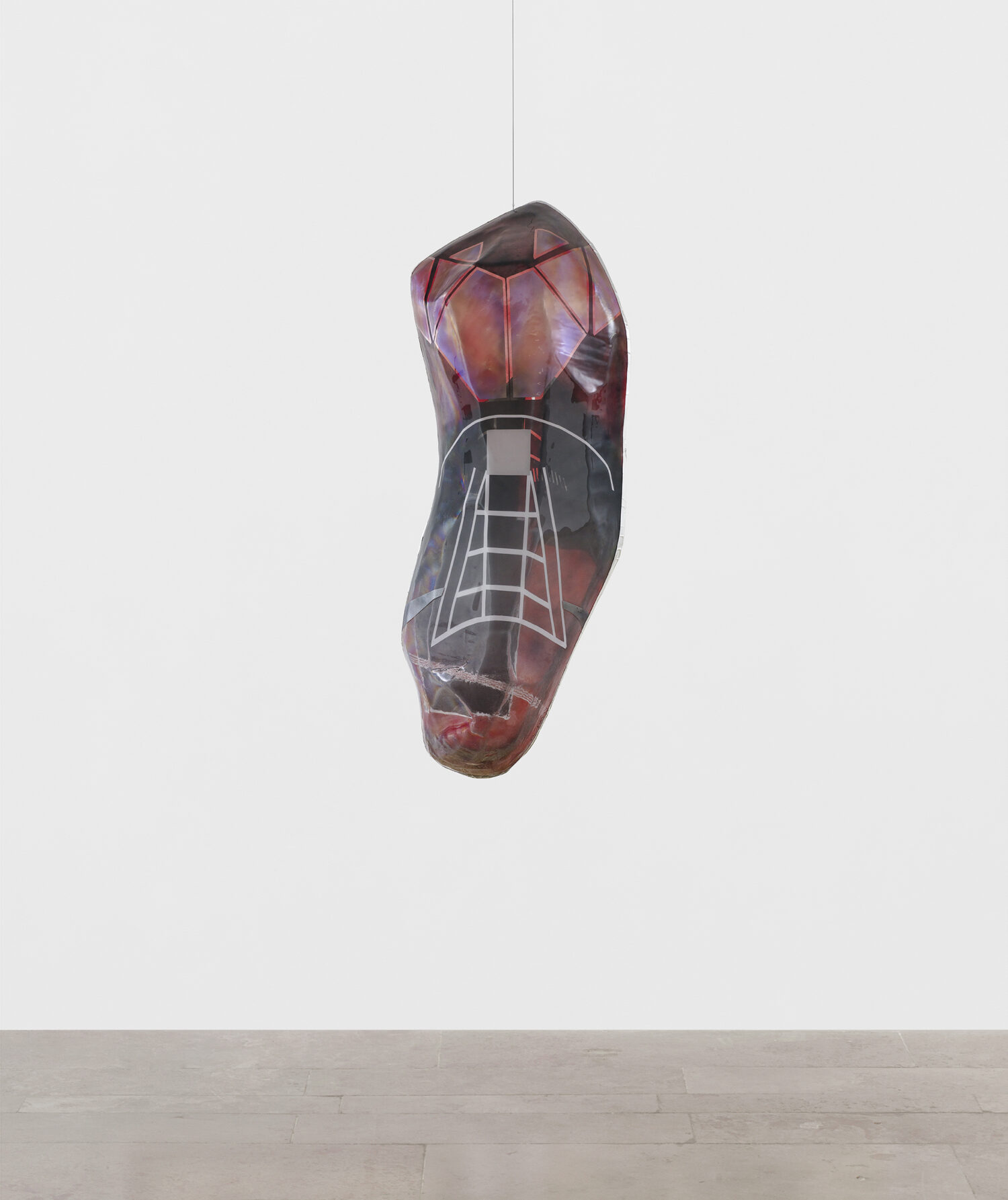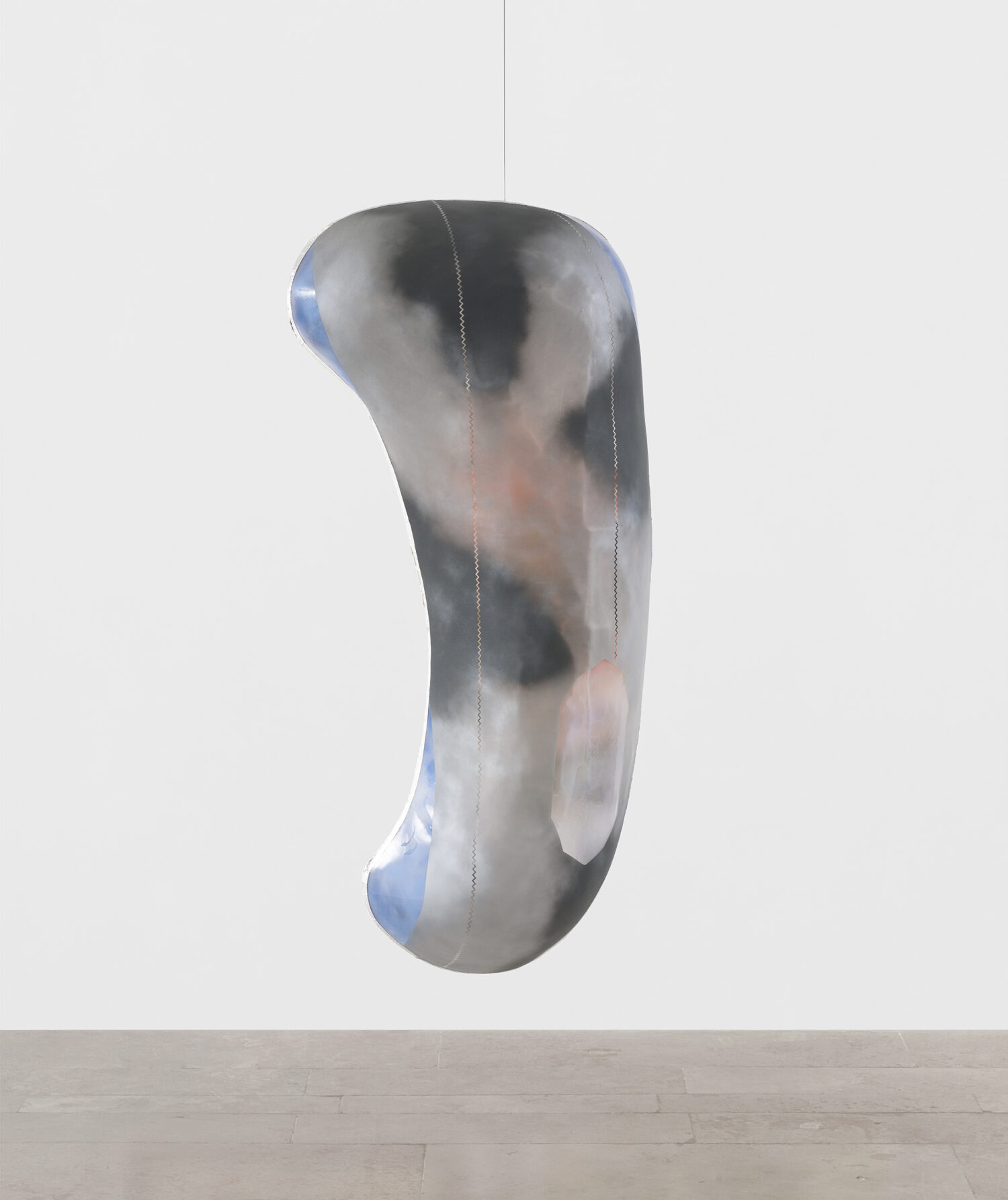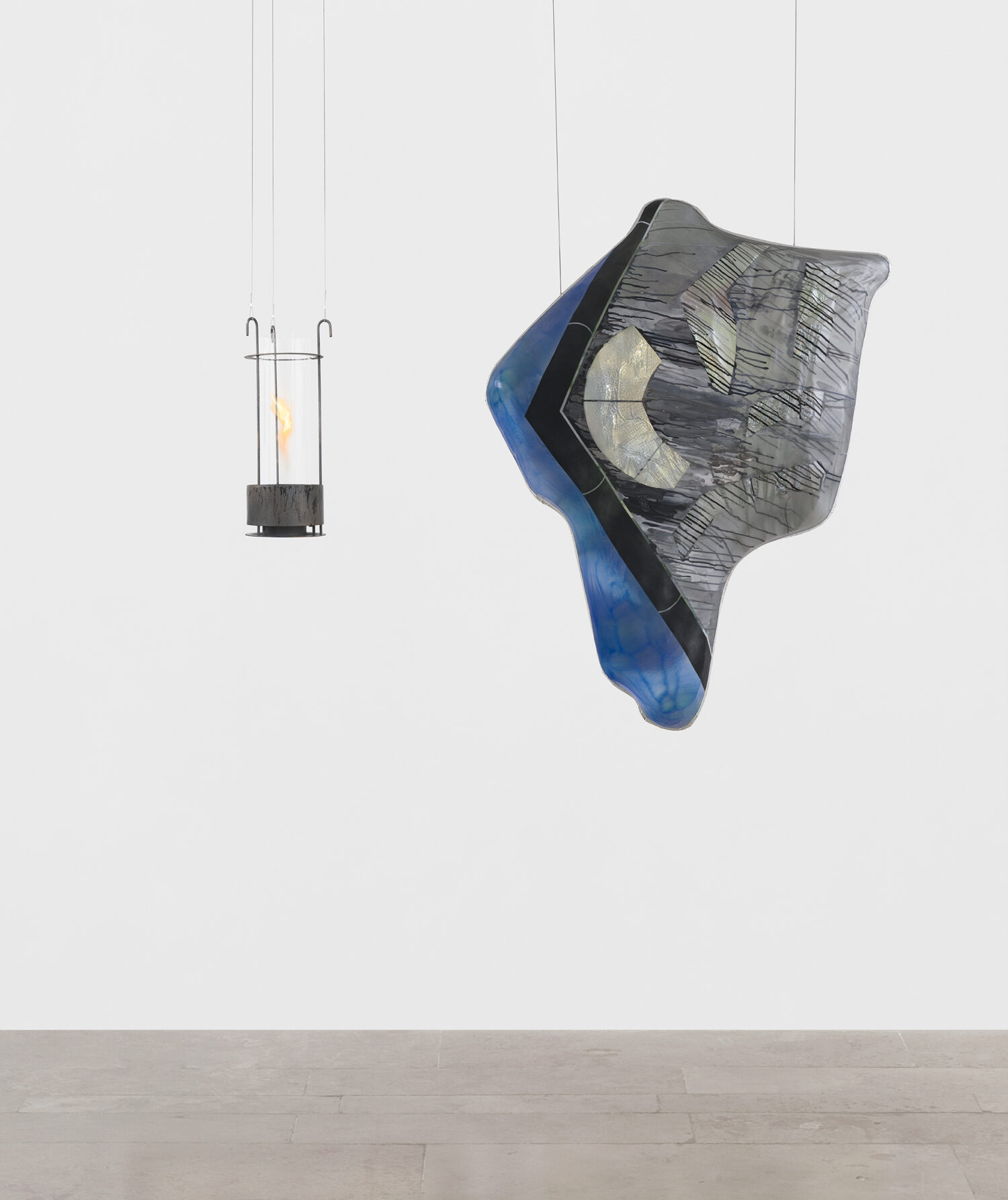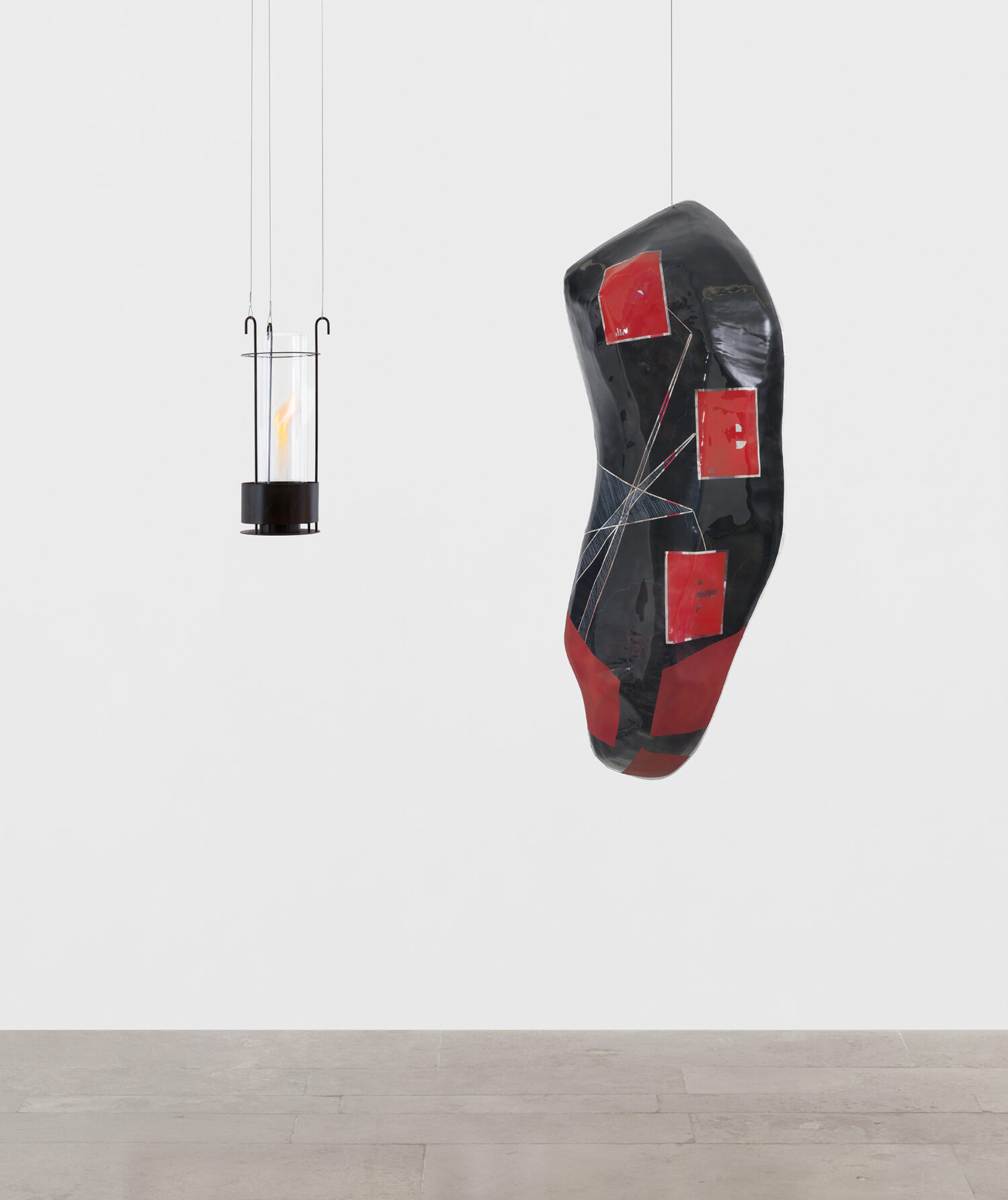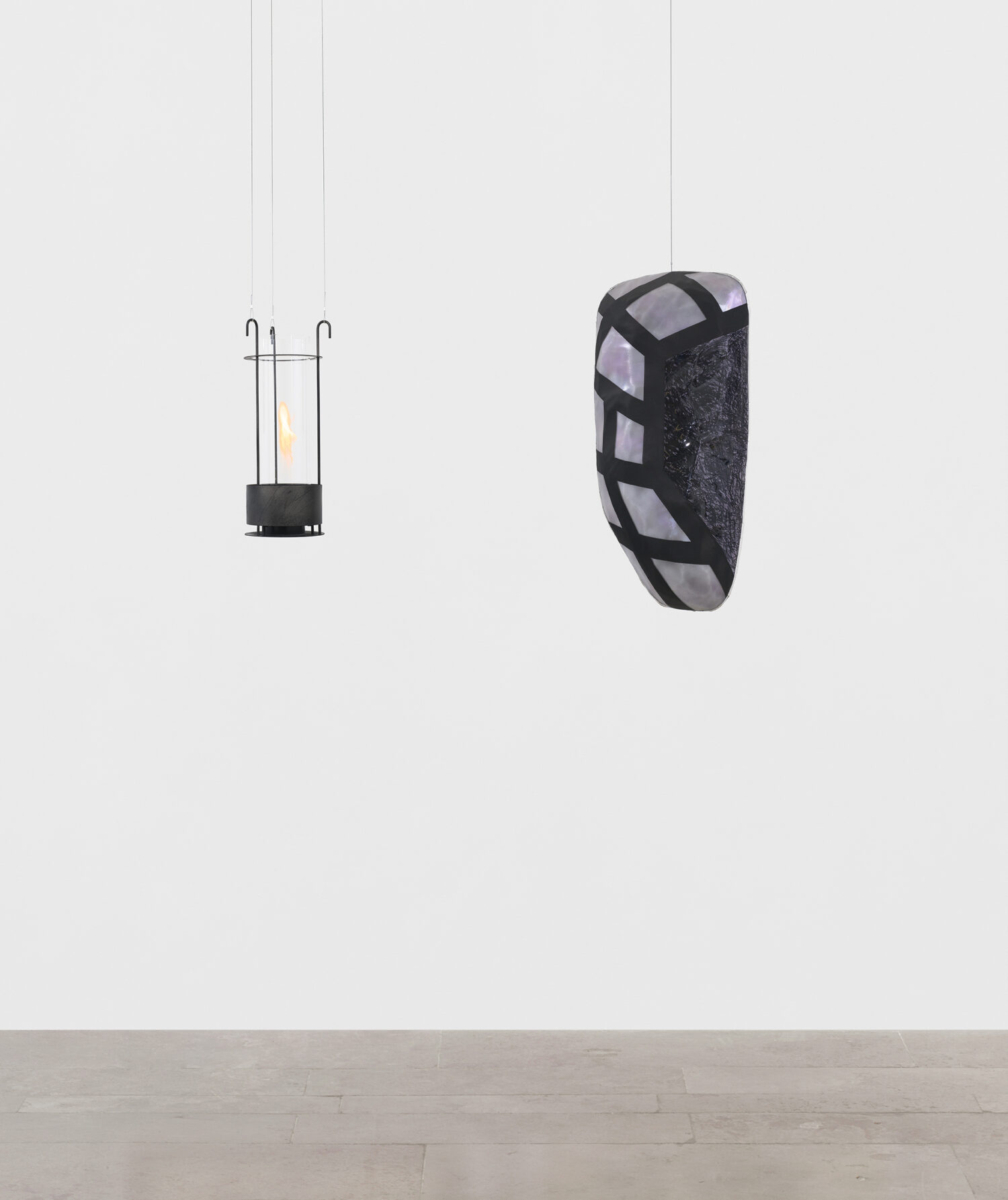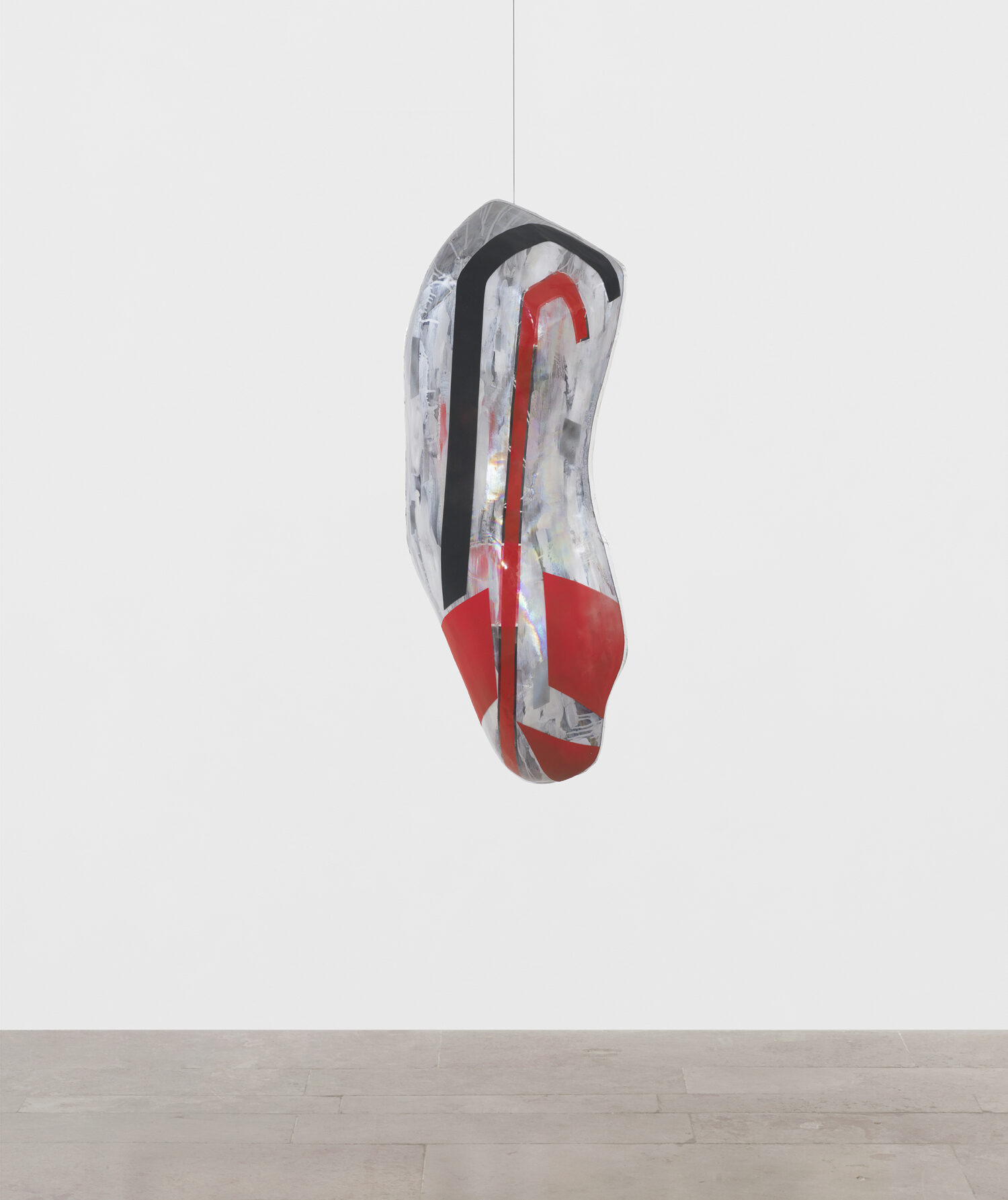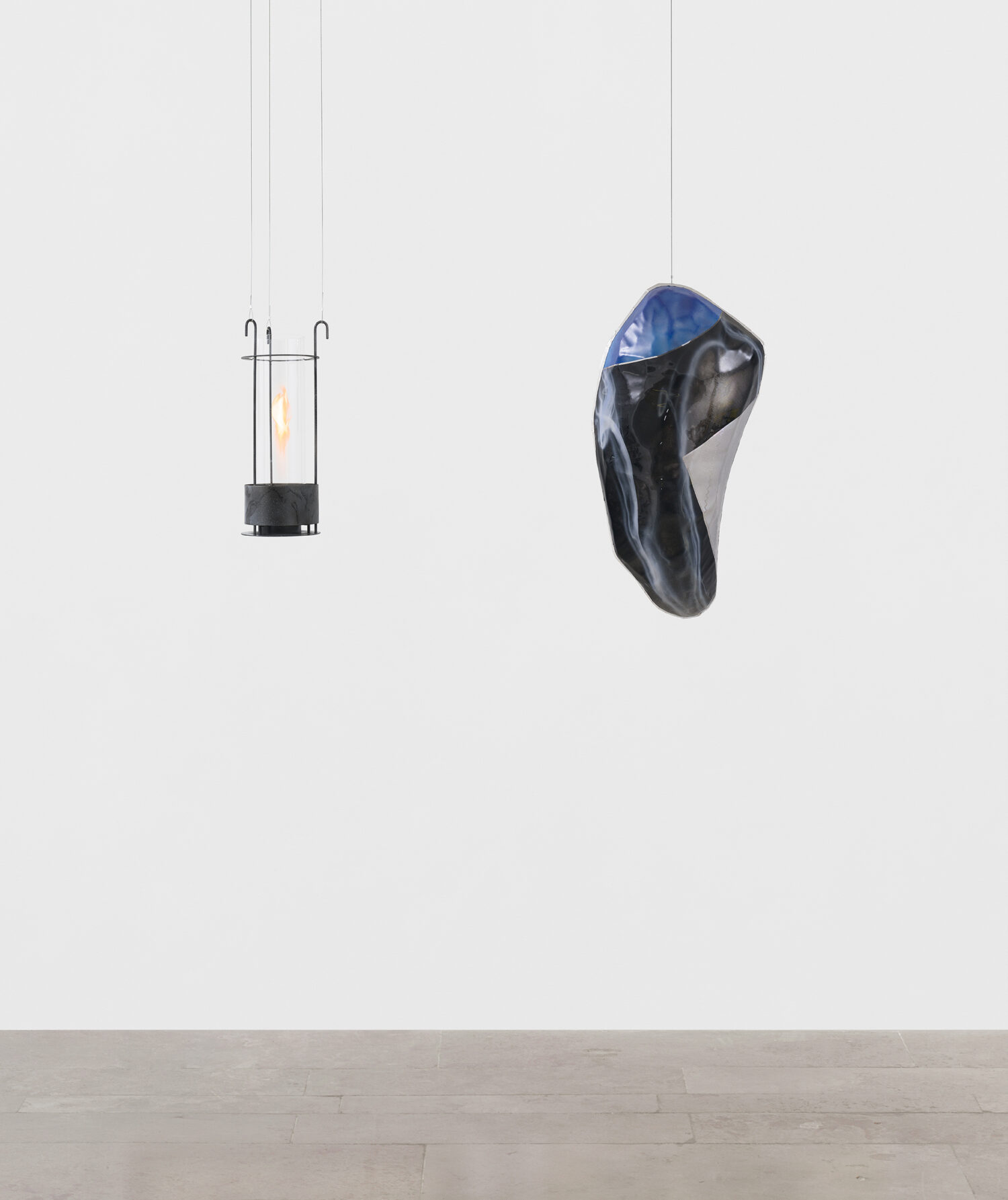

“When people encounter my sculptures,” says Ragen Moss, “frequently the first question I get asked is: ‘How did you make this?’” More than with almost any other artistic medium, sculptures are commonly thought to be reducible to lists of technical details of their fabrication, or the affordances and symbolisms of their raw materials. This is learned behavior. At least since the heyday of Minimalism, Western artists and critics have tried to disabuse their audiences of the idea that abstract sculptures might hold any meaning beyond their own shape and fabrication.
Though the work may formally resonate with a Minimalist tradition, Moss remains invested in the solidly un-minimalist vision of abstract sculpture as a form of “meaning-making.” She is driven by intense analytic and often political investments, even if none of her sculptures tell flatly instructive stories or flaunt catchy political slogans. Like a deceptively placid lake hiding swift undercurrents, navigating these works and charting their depth requires from the audience a willingness for keen observation.
C O N S P I R E is Los Angeles based artist Ragen Moss’ first solo exhibition with Capitain Petzel. The exhibition serves as an invitation to consider what it means “to conspire” in its original – and widest – meaning, taken from the Latin conspirare (literally “to breathe together”), with such “breathing together” also performed formally by Moss’ airy and combusting work. In the exhibition, the artist embraces the various transparencies and vistas of the gallery’s idiosyncratic building by presenting a 14-component installation,
C O N S P I R E (circle) (2023), at the far end of the gallery’s main nave. The delicate indeterminacy of this circular arrangement allows for interesting art historical comparisons. It matches neither the calm stone henges of prehistoric parliaments nor the tense agony of Rodin’s Burghers of Calais, but relates to both in terms of its social, political, and spatial investments. The exhibition also includes seven individual examples of the artist’s signature hanging sculptures. The surfaces of these hollow, irregularly shaped husks alternate between translucency and painted marks adding moments of both visual and conceptual opacity. Each is accompanied by a Lumen, the name Moss has given to hand-drawn metal fixtures used to twist live flames into serpentine shapes and suspend them in a state of jittery equilibrium. In the souterrain, several construction drawings tell of the highly deliberate, methodical nature of the artist’s creative process. Although recent art history may have trained us to associate synthetic materials with depersonalized fabrication, Moss hand- makes the work. On the other end of the spectrum, however, these drawings also remind us that Moss’ process has little to do with many of the clichés that have been used to unfairly denigrate hand-making; instead, the drawings help us appreciate the robust athleticism required of the artist in order to make the sculptures. They further assist in recognizing that although Moss works alone and manually, the process is unsentimentally purposeful, always more intentional than intuitive.
Our sharpest didactic clue to Moss’ “why” for this exhibition, and the concerns driving it, comes in the form of its one-word title: C O N S P I R E. It identifies the show in Berlin as the second of eight steps in a long-term exhibition masterplan, in which each phase is designed to use the spatial experience of sculptures as heuristic tools to explore one crucial and essentially contested philosophical concept taken from law. Investigations began with an exhibition highlighting the legal concept of “deprivation” in New York earlier this year. It now continues here with a lateral approach to the concept of “agreement.”
For Moss, there are parallels between an artwork’s ability to escape simplistic interpretations and the way an “indeterminate” legal concept can be marshaled to serve different, even opposing ends. Both legal philosophy and aesthetics are full of highly abstract concepts bearing tangible consequences; both laws and aesthetic artifacts have been used to create social relationships and enforce social cohesion. Moss wonders how sculptures, like laws, influence how we position ourselves in relation to something greater than ourselves. Thus, one good way to approach these sculptures is to see them as training grounds to practice the most fundamental task of living in a society: Learning how to experience ourselves in space – and to share that space with others, the vast majority of whom are strangers.
Text by Gregor Quack



